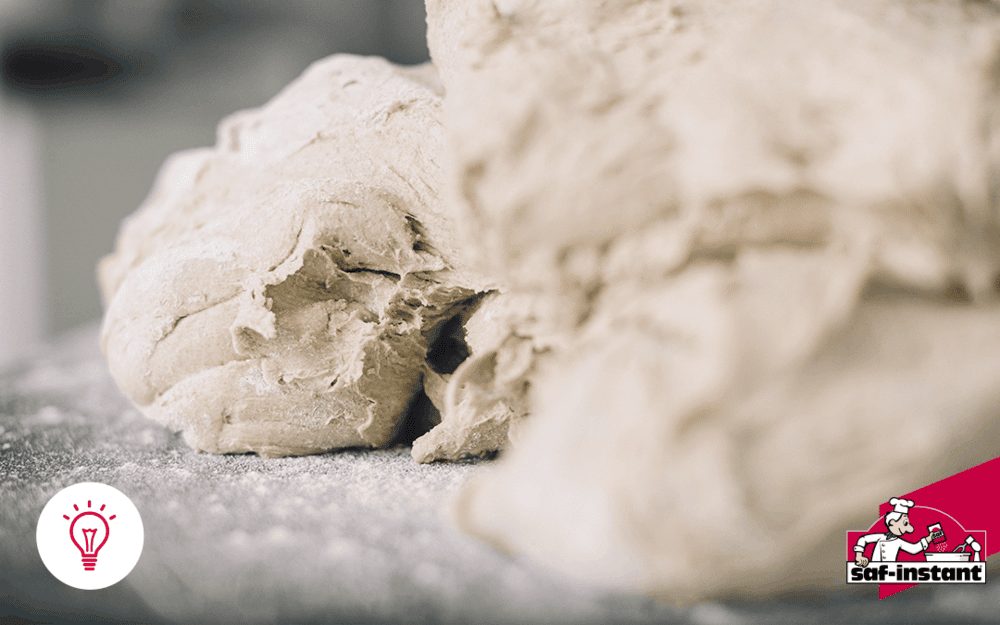04 Jul My dough is sticky: what should I do?

As you begin the shaping step, you realise that your dough is too wet and that its appearance is far too shiny. The verdict is in: your dough is sticky. The causes can be as much related to external factors as to the ingredients themselves. Here’s how to determine the reasons and find solutions!
Why is my dough sticky?
The ingredients can be directly responsible for a dough being too sticky:
- flour that is too fresh;
- sprouted wheat flour;
- poor quality flour;
- too little salt.
The cause may also be down to the preparation:
- an excess of water during kneading;
- excessive autolysis;
- a dough that is too cold;
- a bakehouse that is too humid;
- a lack of strength: your dough is too stretchy, and tends to stick!
If your dough lacks strength, there can be several causes such as:
- fermented dough has been omitted;
- ascorbic acid has been omitted;
- autolysis has been too long;
- first proving has been too short;
- a lack of tightness.
- weak flour.
NB: Autolysis is a technique that involves mixing the total quantity of your flour with water, without the other ingredients. This dough must rest for at least 30 minutes in order to be effective. This technique makes it possible to reduce the strength of your flour, to make the dough stretchier, improve machinability and development in the oven.
What should I do if my dough lacks strength?
Of course, you must first eliminate any causes related to the flour itself by ensuring its quality. Similarly, take all measures necessary to reduce the ambient humidity and steam in the oven.
As far as the preparation of the dough and its handling are concerned, here are some tips for you to try in succession which can control the effects on your dough:
- knead a firmer dough;
- use warmer water;
- increase the ascorbic acid;
- increase the proportion of fermented dough;
- remove the autolysis step;
- increase the temperature at the end of kneading;
- reduce preparation and use a drier linen canvas;
- add flour;
- increase first proving time;
- ball and shape tightly;
- bake in a hot oven.
